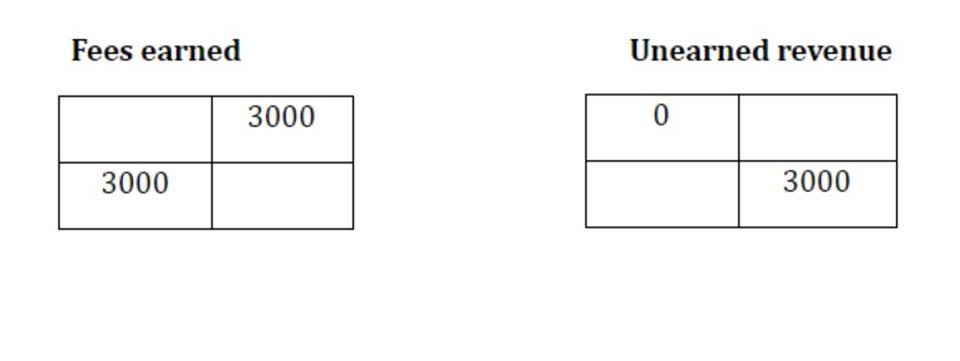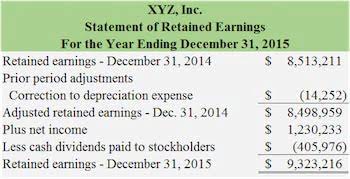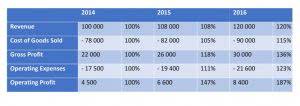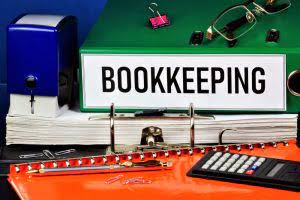Cash flows from investing activities always relate to long-term asset transactions and may involve increases or decreases in cash relating to these transactions. The most common of these activities involve purchase or sale of property, plant, and equipment, but other activities, such as those involving investment assets and notes receivable, also represent cash flows from investing. Changes in long-term assets for the period can be identified in the Noncurrent Assets section of the company’s comparative balance sheet, combined with any related gain or loss that is included on the income statement. Decreases in current liabilities indicate a decrease in cash relating to (1) accrued expenses, or (2) deferred revenues. In the first instance, cash would have been expended to accomplish a decrease in liabilities arising from accrued expenses, yet these cash payments would not be reflected in the net income on the income statement.
How to find operating cash flow?
Whether you’re an accountant, a financial analyst, or a private investor, it’s important to know how to calculate how much cash flow was generated in a period. We sometimes take for granted when reading financial statements how many steps are actually involved in the calculation. The direct method adds up all the various types of cash payments and receipts, including cash paid to suppliers, cash receipts from customers and cash paid out in salaries.
Net income and earnings per share (EPS) are two of the most frequently referenced financial metrics, so how are they different from operating cash accounting services fort worth flow? The main difference comes down to accounting rules such as the matching principle and the accrual principle when preparing financial statements. Still, whether you use the direct or indirect method for calculating cash from operations, the same result will be produced.
Thus, the decrease in receivable identifies that more cash was collected than was reported as revenue on the income statement. Cash flow from operations indicates where a company gets its cash from regular activities and how it uses that money during a particular period of time. Typical cash flow from operating activities include cash generated from customer sales, money paid to a company’s suppliers, and interest paid to lenders. Investing and financing transactions are critical activities of business, and they often represent significant amounts of company equity, either as sources or uses of cash.
What is operating cash flow?
Cash inflows from operating activities are generated by sales of goods or services, the collection of accounts receivable, lawsuits settled or insurance claims paid. The Financial Accounting Standards Board (FASB) recommends that companies use the direct method as it offers a clearer picture of cash flows in and out of a business. The offset to the $500 of revenue would appear in the accounts receivable line item on the balance sheet. On the cash flow statement, there would need to be a reduction from how to identify bottlenecks in manufacturing net income in the amount of the $500 increase to accounts receivable due to this sale. It would be displayed on the cash flow statement as “Increase in Accounts Receivable -$500.” Assume that Example Corporation issued a long-term note/loan payable that will come due in three years and received $200,000.
Operating Cash Flow (OCF) is the amount of cash generated by the regular operating activities of a business within a specific time period. OCF is a prized measurement tool as it helps investors gauge what’s going on behind the scenes. For many investors and analysts, OCF is considered the cash version of net income, since it cleans the income statement of non-cash items and non-cash expenditures (depreciation, amortization, non-cash working capital items). Financing activities consist of activities that will alter the equity or borrowings of a company. Examples of financing activities include the sale of a company’s shares or the repurchase of its shares. Investors should be aware of these considerations when comparing the cash flow of different companies.
Quick Guide to Changes in Current Asset Balances
Some required information for the SCF that will be disclosed in the notes includes significant exchanges that did not involve cash, the amount of interest paid, and the amount of income taxes paid. If Example Corporation issues additional shares of its common stock, the amount received will be reported as a positive amount. The adjustments reported in the operating activities section will be demonstrated in detail in “A Story To Illustrate How Specific Transactions and Account Balances Affect the Cash Flow Statement” in Part 3.
How to improve cash flow from operations?
Propensity Company had a noncash investing and financing activity, involving the purchase of land (investing activity) in exchange for a $20,000 note payable (financing activity). To get a complete picture of a company’s financial position, it is important to take into account capital expenditures (CapEx), which can be found under Cash Flow from Investing Activities. As explained on page 91 of the report, the first one has previously been considered as a cost expense that, in reality, is a non-cash item since it represents payments to employees in stock options or equivalents. The second one relates to services that have been invoiced but are not considered as revenue because they have not been entirely executed. Under the direct method, the information contained in the company’s accounting records is used to calculate the net CFO.
The three net cash amounts from the operating, investing, and financing activities are combined into the amount often described as net increase (or decrease) in cash during the year. Decreases in net cash flow from investing normally occur when long-term assets are purchased using cash. For example, in the Propensity Company example, there was a decrease in cash for the period relating to a simple purchase of new plant assets, in the amount of $60,000. Investing net cash flow includes cash received and cash paid relating to long-term assets. Our starting point is the net income metric, i.e. the accrual accounting profits of our company, which is derived from the income statement (the “bottom line”). The CFS starts with the “Cash Flow from Operating Activities” section, which calculates a company’s operating cash flow (OCF) in a specified period.
- Propensity Company sold land, which was carried on the balance sheet at a net book value of $10,000, representing the original purchase price of the land, in exchange for a cash payment of $14,800.
- A financial professional will offer guidance based on the information provided and offer a no-obligation call to better understand your situation.
- The adjustments reported in the operating activities section will be demonstrated in detail in “A Story To Illustrate How Specific Transactions and Account Balances Affect the Cash Flow Statement” in Part 3.
It provides as additional measure/indicator of profitability potential of a company, in addition to the traditional ones like net income or EBITDA. Next, assume that Example Corporation distributed $110,000 of cash dividends to its stockholders. The $110,000 cash outflow has an unfavorable or negative effect on the company’s cash balance. As a result, the amount will be shown in the financing section of the SCF as (110,000). If an adjustment to the amount of net income is in parentheses, it is subtracted from net income.
You can find the cash flow from operating activities on a company’s cash flow statement. You can also calculate operating cash flow by adding together a company’s net income, non-cash items (adjustments to net income), and working capital. The details about the cash flow of a company are available in its cash flow statement, which is part of a company’s quarterly and annual reports. The cash flow from operating activities depicts the cash-generating abilities of a company’s core business activities. It typically includes net income from the income statement and adjustments to modify net income from an accrual accounting basis to a cash accounting basis. Under the indirect method, the SCF section cash flows from operating activities begins with the amount of net income, which is taken from the company’s income statement.
In Example Corporation the net increase in cash during the year is $92,000 which is the sum of $262,000 + $(260,000) + $90,000. Upgrading to a paid membership gives you access to our extensive collection of plug-and-play Templates designed to power your performance—as well as CFI’s full course catalog and accredited Certification Programs. For the past 52 years, Harold Averkamp (CPA, MBA) hasworked as an accounting supervisor, manager, consultant, university instructor, and innovator in teaching accounting online.
The depreciation and amortization expense, or “D&A”, is embedded within COGS and operating expense section. OCF differs from FCF because the calculation of FCF includes capital expenditures (Capex), unlike OCF. The less prevalent approach to calculating OCF is the direct method, which uses cash accounting to track the movement of cash during a specified period.































